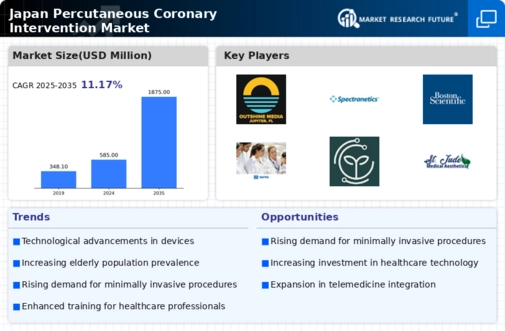The competitive landscape of the Japan Percutaneous Coronary Intervention Market is characterized by a dynamic array of companies that focus on developing innovative cardiovascular solutions. This market reflects the increasing prevalence of coronary artery disease in Japan, which necessitates effective and minimally invasive treatment options.
Various players within this sector engage in advanced research and development to enhance their product offerings, striving to capture a substantial market share. As the market matures, companies are also focusing on strategic partnerships, collaborations, and growth through mergers and acquisitions to maintain their competitive edge.
Innovation in technology and improvements in procedural efficiencies are key drivers in this highly valuable sector.
Johnson and Johnson holds a prominent position in the Japan Percutaneous Coronary Intervention Market, leveraging its extensive experience and resources in the healthcare sector. The company is well-regarded for its commitment to quality and innovation, particularly in its cardiac intervention technologies.
Johnson and Johnson's strengths lie in its robust product portfolio, which includes cutting-edge stent technologies, catheter systems, and diagnostic tools. The company's established reputation enables it to maintain strong relationships with healthcare providers and institutions, allowing for better market penetration.
Additionally, their focus on continuous improvement and adaptation to market demands fuels their ability to remain a competitive force in Japan's evolving cardiology landscape. Spectranetics, a notable player in the Japan Percutaneous Coronary Intervention Market, specializes in providing advanced solutions geared toward the treatment of coronary and vascular diseases.
Their key products include a range of laser products and devices designed primarily for the treatment of obstructive coronary artery disease, such as atherectomy systems and support catheters. Spectranetics has made significant strides in establishing its market presence through meticulous attention to safety and performance in its product offerings.
The company's strategic focus on innovation has been complemented by collaborations and partnerships that enhance its capabilities in the Japanese market. Their strengths lie in their dedicated commitment to research and development, ensuring compliance with stringent regulatory standards, and meeting the specialized needs of healthcare providers in Japan, further solidifying their competitive standing in this niche yet critical market segment.





















